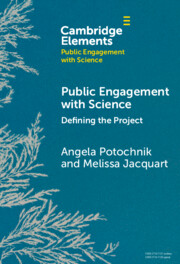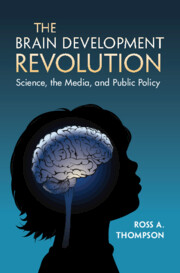Refine search
Actions for selected content:
56 results
Towards a virtual environment for the Sterkfontein Caves, South Africa: developing a georeferenced and optimised digital dataset
-
- Journal:
- Antiquity , First View
- Published online by Cambridge University Press:
- 03 July 2025, pp. 1-6
-
- Article
-
- You have access
- Open access
- HTML
- Export citation
The Ethics and Epistemology of Persuasion
-
- Journal:
- Canadian Journal of Philosophy , FirstView
- Published online by Cambridge University Press:
- 18 June 2025, pp. 1-15
-
- Article
-
- You have access
- Open access
- HTML
- Export citation
Expert Interviews, Good Questioning, and the Epistemic Duties of Journalism
-
- Journal:
- Episteme , First View
- Published online by Cambridge University Press:
- 09 June 2025, pp. 1-20
-
- Article
-
- You have access
- Open access
- HTML
- Export citation
Trust in Scientific Expertise and the Varying Demands of Value Transparency
-
- Journal:
- Canadian Journal of Philosophy , FirstView
- Published online by Cambridge University Press:
- 28 May 2025, pp. 1-16
-
- Article
- Export citation
Should Science Journalists Know Science?
-
- Journal:
- Canadian Journal of Philosophy , FirstView
- Published online by Cambridge University Press:
- 26 February 2025, pp. 1-19
-
- Article
-
- You have access
- Open access
- HTML
- Export citation

Public Engagement with Science
- Defining the Project
-
- Published online:
- 27 January 2025
- Print publication:
- 08 May 2025
-
- Element
-
- You have access
- Open access
- HTML
- Export citation
Education and outreach activities by the Antarctic Treaty Parties: topics and target audiences
-
- Journal:
- Antarctic Science / Volume 36 / Issue 6 / December 2024
- Published online by Cambridge University Press:
- 23 December 2024, pp. 514-523
-
- Article
- Export citation
Statistical consulting guidelines for new researchers in psychiatry and mental health – beyond ChatGPT
-
- Journal:
- BJPsych Advances / Volume 31 / Issue 2 / March 2025
- Published online by Cambridge University Press:
- 28 November 2024, pp. 91-102
- Print publication:
- March 2025
-
- Article
-
- You have access
- Open access
- HTML
- Export citation
Quantifying the scientist–practitioner gap: How do small business owners react to our academic articles?
-
- Journal:
- Industrial and Organizational Psychology / Volume 17 / Issue 4 / December 2024
- Published online by Cambridge University Press:
- 27 August 2024, pp. 379-398
-
- Article
-
- You have access
- Open access
- HTML
- Export citation
Online Case Study 4 - Jane Lubchenco: Community, Ecosystem, and Global Ecology
- from Part V - Ecosystem and Global Ecology
-
- Book:
- Ecology in Action
- Published online:
- 04 April 2024
- Print publication:
- 04 July 2024, pp 532-533
-
- Chapter
- Export citation
The Rationality of COVID-19 Vaccine Hesitancy
-
- Article
-
- You have access
- Open access
- HTML
- Export citation

The Brain Development Revolution
- Science, the Media, and Public Policy
-
- Published online:
- 24 August 2023
- Print publication:
- 07 September 2023
On the effectiveness of public awareness campaigns for the management of invasive species
- Part of
-
- Journal:
- Environmental Conservation / Volume 50 / Issue 4 / December 2023
- Published online by Cambridge University Press:
- 22 August 2023, pp. 202-211
-
- Article
-
- You have access
- Open access
- HTML
- Export citation
Science Journalism and Epistemic Virtues in Science Communication: A Defense of Sincerity, Transparency, and Honesty
-
- Article
-
- You have access
- Open access
- HTML
- Export citation
4 - Facts and Values
-
- Book:
- Decisions for Sustainability
- Published online:
- 25 May 2023
- Print publication:
- 08 June 2023, pp 59-76
-
- Chapter
- Export citation
Design for communication: how do demonstrators demonstrate technology?
-
- Journal:
- Design Science / Volume 9 / 2023
- Published online by Cambridge University Press:
- 23 February 2023, e3
-
- Article
-
- You have access
- Open access
- HTML
- Export citation
18 - The Forests before Us
- from Part II - The Scientific Basis
-
- Book:
- Seeing the Forest for the Trees
- Published online:
- 02 February 2023
- Print publication:
- 09 February 2023, pp 224-231
-
- Chapter
- Export citation
The effects of communicating scientific uncertainty on trust and decision making in a public health context
-
- Journal:
- Judgment and Decision Making / Volume 17 / Issue 4 / July 2022
- Published online by Cambridge University Press:
- 01 January 2023, pp. 849-882
-
- Article
-
- You have access
- Open access
- HTML
- Export citation
A brief forewarning intervention overcomes negative effects of salient changes in COVID-19 guidance
-
- Journal:
- Judgment and Decision Making / Volume 16 / Issue 6 / November 2021
- Published online by Cambridge University Press:
- 01 January 2023, pp. 1549-1574
-
- Article
-
- You have access
- Open access
- HTML
- Export citation
26 - Communications
- from Part V - Influence
-
-
- Book:
- A Critical Assessment of the Intergovernmental Panel on Climate Change
- Published online:
- 08 December 2022
- Print publication:
- 22 December 2022, pp 244-252
-
- Chapter
-
- You have access
- Open access
- HTML
- Export citation
